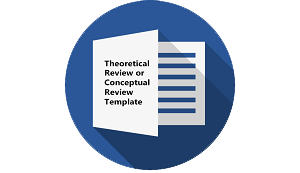FIGURE OF SPEECH REPRESENTING RELIGIOUS EDUCATION VALUES IN MOUSTAFA AKKAD’S THE MESSAGE
DOI:
https://doi.org/10.30957/lingua.v16i1.568Keywords:
figure of speech, religious education value, The Message movieAbstract
Â
Â
Figure of speech used in literary writing touches feelings, emotions based on an image of things seen, and actions experienced. When it applies to the language in a movie, it may furnish new effects or fresh insights into an idea or a subject. This study explored the figure of speech representing religious education values in Moustafa Akkad's The Message movie. As qualitative descriptive research, the source of data was the script of the movie analyzed from the sociolinguistic point of view. The result shows that the film used the figurative language to express religious education values through irony, simile, personification, paradox, hyperbole, oxymoron, metaphor, repetitive, metonymy, antithesis, onomatopoeia, and symbol. Â Also, Moustafa Akkad presented several religious values applicable to teaching English for Islamic Studies.
Â
Â
Downloads
References
Ayish, Muhammad Ibrahim (2008). The New Arab Public Sphere. Berlin: Frank & Timmie.
Al-Fadda, Abdul Aziz N. (2010). The Translation of Rhetorical Questions in Hadith, from Arabic into English: A Functionalist Approach. An unpublished M.A. Thesis. King Saudi University.
Barker, Martin (2006). “I have seen the future, and it is not here yet...; or on being ambitious for audience research†The Communication Review 9 (2), 123-141.
Blommaert, J. (2017). Society through the Lens of Language: A New Look at Social groups and Integration. Tilburg Papers in Cultural Studies, 178.
Chaika, Elaine (1995). Language the Social Mirror. Massachusetts: Newbury House Publishers, Inc.
Colston, H. L. (2015). Using figurative language. Cambridge University Press.
Dennis (1996). Language and Diction in Linguistics. Berkeley: University of California.
Dwyer, Rachel (2006). Filming the Gods: religion and Indian cinema, London: Routledge.
Durkheim, Emile (2001). The elementary forms of religious life, translation Carol Cosman, Oxford: Oxford University Press.
Ekasani, Kadek Ayu (2015) The Use of Figurative Expression. International Journal of Linguistics, Literature and Culture 1 (1): 24-33
Heredia, R. R., & Cieślicka, A. B. (Eds.). (2015). Bilingual figurative language processing. Cambridge University Press.
Hodges, John C. (1984). Harbrace college handbook. New York: Routledge.
Holmes, J. (2013). An Introduction to Sociolinguistics (Fourth Edition). New York: Routledge.
Holmes, J & Wilson, Nick (2017). An Introduction to Sociolinguistics (Fifth Edition). London: Oxford
Hjarvard, Stig (2008) “The Mediatization of Religion: a theory of the media as agents of religious change,‟ Northern Lights: film and media studies yearbook, 6 (1), 9-26.
Jimenez-Munoz, An¬to¬nio & MartÃnez, Ana Cristina L. (2017). A metaphor-metonymy continuum? Ev¬i¬dence from cross-field L2 set texts. Ibérica 34 (1), 257-278
Kennedy, X. J. (1983). Literature: An Introduction to Fiction, Poetry, and Drama. Boston: Little Brown and Company.
Littlemore, J. (2015). Metonymy. Cambridge University Press.
Luna, L. M. R. Root Luna, LM, Van Tongeren, DR, & Witvliet, CVO (2017). Virtue, positive psychology, and religion: Consideration of an overarching virtue and an underpinning mechanism. Psychology of Religion and Spirituality 9 (3), 299-302.
Lutan. (2012). An Analysis of Figurative Languages Used in Harry Potter Fifth Movie “Harry Potter And The Order of The Phoenix. Thesis. The State University of Surabaya.
Lowke. (2001).Essay Three — Muhammad “Early Persecution in Mecca. Thesis.
Pradopo, Rachmat Djoko (1995). Beberapa Teori Sastra, Metode Kritik, dan Penerapannya. Yogyakarta: Pustaka Pelajar.
Risdianto, F. (2011). Introduction to Literature. Yogyakarta: Trust Media Publishing.
Sivaku¬mar, R. (2015). Dis¬tinc¬tion be¬tween Lit¬eral and Non-Lit¬eral Mean¬ings. International Journal of Multifaceted and Multilingual Studies 1 (4); 23-35
Stevanus J.P. (2013). Translation Analysis on Figurative Language in The Old man and The SeaBy Ernest Hemingway Into Lelaki Tua dan Luat Tuat by Sapardi Djoko Damono. Thesis. Semarang: Diponegoro University.
Trudgill, P. (2000). Sociolinguistics: An Introduction to Language and Society (Fourth Edition). London: Penguin Group.
Wardhaugh, R. (2006). An Introduction to Sociolinguistics (Fifth Edition). Oxford: Blackwell Publishing Ltd.
Yule, G. (2010). The Study of Language (Fourth Edition). Cambridge: Cambridge University Press.
Downloads
Published
How to Cite
Issue
Section
License
Authors who publish with this journal agree to the following terms:
- Authors retain copyright and grant the journal right of first publication with the work simultaneously licensed under a Creative Commons Attribution-ShareAlike 4.0 International License that allows others to share the work with an acknowledgement of the work's authorship and initial publication in this journal.
- Authors are able to enter into separate, additional contractual arrangements for the non-exclusive distribution of the journal's published version of the work (e.g., post it to an institutional repository or publish it in a book), with an acknowledgement of its initial publication in this journal.
- Authors are permitted and encouraged to post their work online (e.g., in institutional repositories or on their website) prior to and during the submission process, as it can lead to productive exchanges, as well as earlier and greater citation of published work (See The Effect of Open Access).















